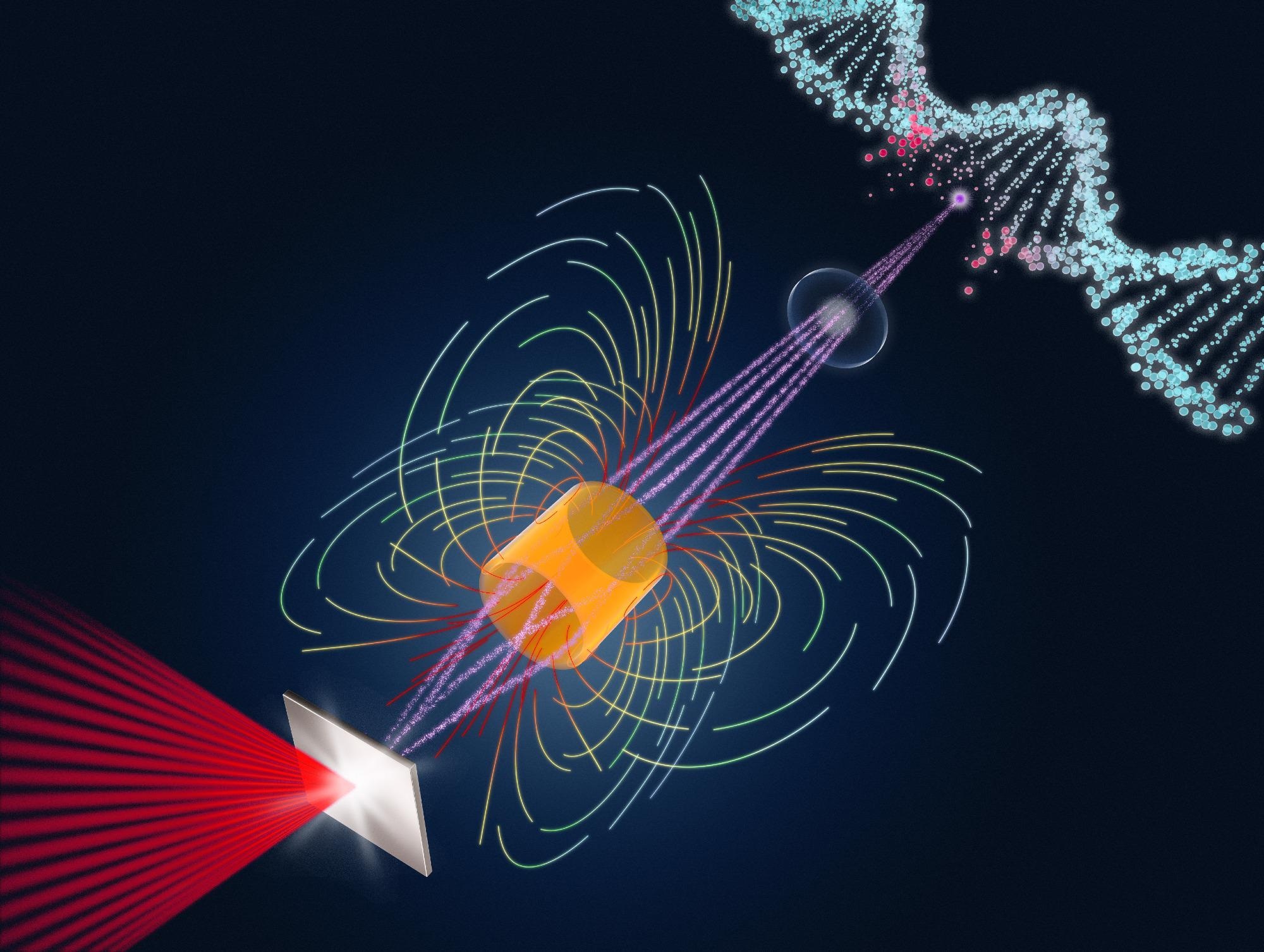Rapid proton irradiation is a more efficient and minimally invasive treatment for cancer than X-Rays. Modern proton treatment, on the other hand, necessitates huge particle accelerators, prompting researchers to look into alternate accelerator technologies such as laser systems to boost protons. In preclinical investigations, such systems are used to pave the way for the most effective radiation therapy.
 A research team led by HZDR scientists has successfully tested the irradiation of tumors with laser protons for the first time. Image Credit: HZDR / Juniks.
A research team led by HZDR scientists has successfully tested the irradiation of tumors with laser protons for the first time. Image Credit: HZDR / Juniks.
As reported in the journal Nature Physics, a team of researchers led by the Helmholtz-Zentrum Dresden-Rossendorf (HZDR) has successfully demonstrated irradiation with laser protons on animals for the very first time.
One of the most common cancer treatments is radiation therapy. It frequently makes use of powerful, focussed X-Ray photons. Protons — the nuclei of hydrogen atoms — are an alternative that can be accelerated to high energy and packed into tiny, precisely targetable bunches.
They can go deep into the tissue, depositing the majority of their energy in the tumor and damaging it while leaving the surrounding tissue mostly undamaged. As a result, the approach is both more successful and less invasive than traditional X-Ray therapy.
The method is particularly suitable for irradiating tumors at the base of the skull, in the brain, and in the central nervous system. It is also used in pediatric cancer patients to reduce possible long-term effects.
Dr. Elke Beyreuther, Researcher, Helmholtz-Zentrum Dresden-Rossendorf
The approach, however, is substantially more complicated than X-Ray therapy since it necessitates expensive accelerator equipment to generate and convey fast protons to the patient.
As a result, only a few proton treatment centers exist in Germany, one of which is located at Dresden University Hospital. Experts are now striving to refine the approach and customize it to patients. Proton accelerators based on lasers could make a significant contribution in this area.
Customized Laser Flashes
The approach is based on a high-power laser to generate strong and extremely short light pulses, which are fired at a thin plastic or metal foil.
Dr. Florian Kroll, Physicist, Helmholtz-Zentrum Dresden-Rossendorf
The intensity of these flashes rips swathes of electrons from the foil, providing a stronger electric field that can bundle protons into pulses and drive them to high energies. This mechanism is interesting because the scale is so small: the acceleration path is only a few micrometers long.
We have been working on the project for 15 years, but so far, the protons hadn’t picked up enough energy for irradiation. Also, the pulse intensity was too variable, so we couldn’t make sure we were delivering the right dose.
Dr. Elke Beyreuther, Researcher, Helmholtz-Zentrum Dresden-Rossendorf
However, researchers have progressed significantly in recent years, mainly thanks to a greater understanding of the interplay between laser flashes and the foil.
“Above all, the precise shape of the laser flashes is particularly important. We can now tailor them to create proton pulses that have sufficient energy and are also stable enough,” Kroll adds.
New Research Requirements
Finally, the parameters were dialed into the point where the HZDR team could begin a vital series of tests: the first-ever, regulated irradiation of tumors in mice with laser-accelerated protons.
The investigations were performed at the OncoRay — National Center for Radiation Research in Oncology — in collaboration with experts from Dresden University Hospital and benchmarked against comparison experiments at a traditional proton treatment facility.
“We found that our laser-driven proton source can generate biologically valuable data. This sets the stage for further studies that will allow us to test and optimize our method,” Kroll reports.
The high intensity of laser-accelerated proton pulses is yet another distinguishing trait. While traditional proton treatment delivers the radiation dose over a few minutes, the laser-based approach might happen in a millionth of a second.
“There are indications that such a rapid dose administration helps spare the healthy surrounding tissue even better than before. We want to follow up on these indications with our experimental setup and conduct preclinical studies to investigate when and how this rapid irradiation method should be used to gain an advantage in cancer therapy,” interprets Elke Beyreuther.
Journal Reference:
Kroll, F. et al. (2022) Tumour irradiation in mice with a laser-accelerated proton beam. Nature Physics. doi.org/10.1038/s41567-022-01520-3.